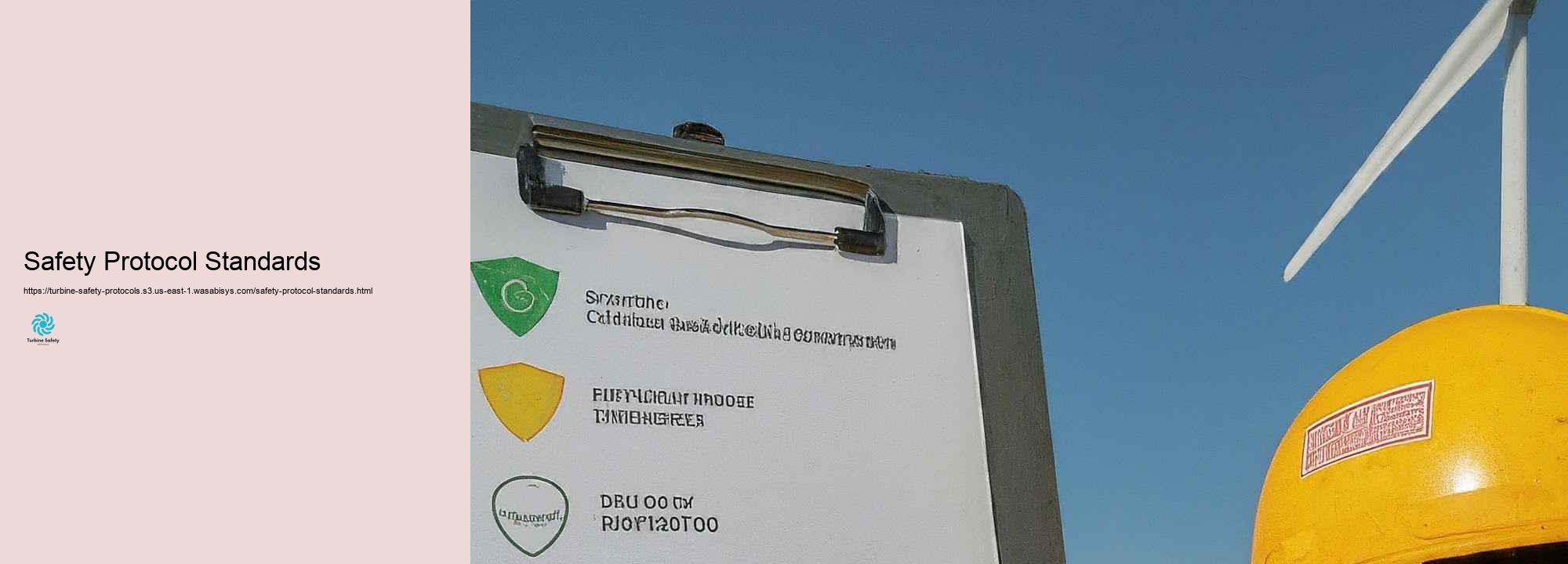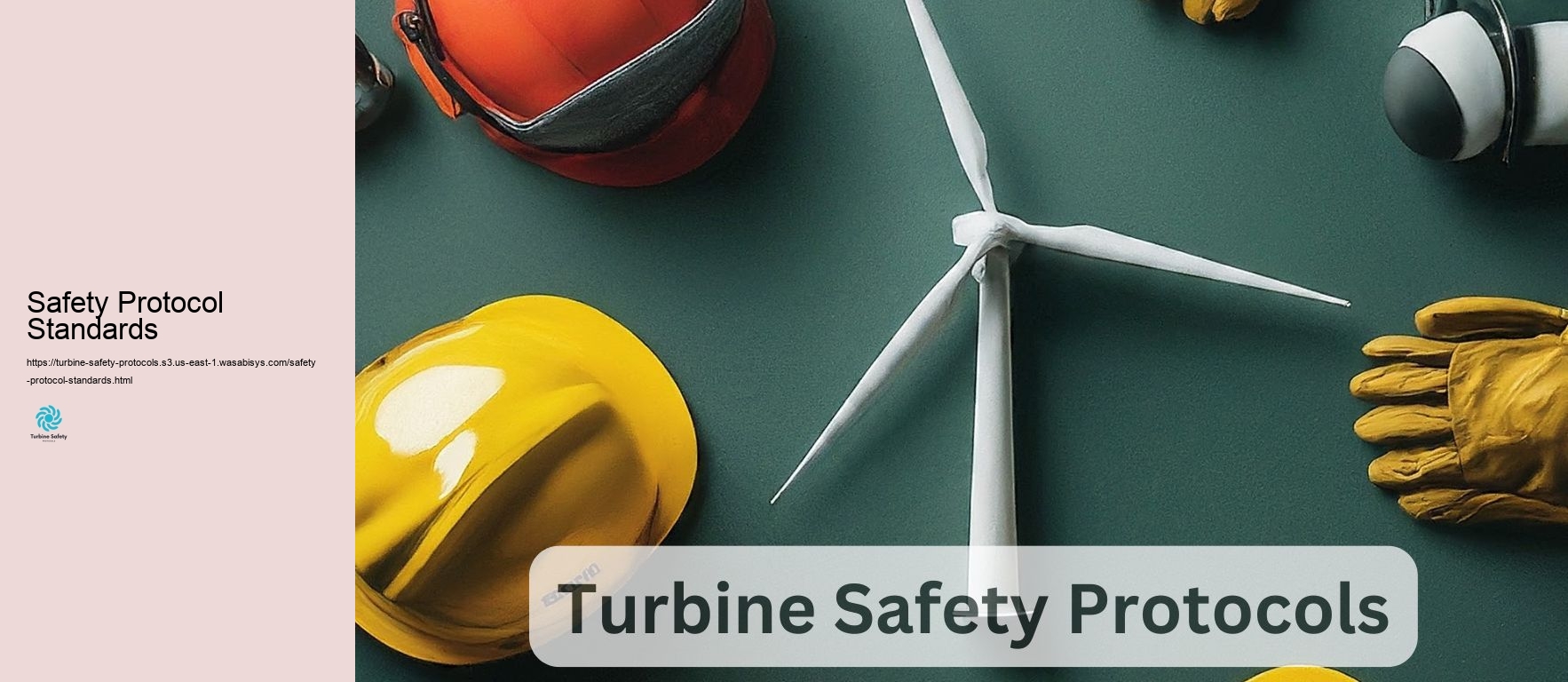

Turbine safety protocols are essential elements of power generation treatments, developed to safeguard employees, gadgets, and the setting from possible threats gotten in touch with turbine operation. These protocols include a wide array of techniques, treatments, and requirements that regulate every aspect of turbine management, from regular maintenance to emergency situation activity. Understanding and using these safety protocols is important for making certain the safe, reliable, and relied on procedure of wind turbines in various power generation setups. At the core of turbine safety protocols is the principle of hazard assessment and keeping an eye on. This includes systematically determining possible threats gotten in touch with turbine procedure, reviewing the possibility and possible consequences of these threats, and performing steps to lessen or do away with dangers. Danger assessments are usually executed regularly and updated whenever there are adjustments in devices, therapies, or operating problems. Individual safety gadgets (PPE) produces a crucial line of protection in turbine safety protocols. Relying on the specific work and atmosphere, PPE may include building hats, shatterproof glass, ear security, steel-toed boots, flame-resistant garments, and loss protection tools. Correct training in the use, upkeep, and restrictions of PPE is essential to assurance its efficiency in securing staff members from possible dangers. Safety Protocol Standards Lockout/tagout (LOTO) procedures are basic to turbine safety, particularly throughout repair and maintenance procedures. These procedures ensure that possibly hazardous power resources are appropriately apart and handled prior to job beginnings. LOTO protocols generally involve de-energizing gadgets, locking out power privacy gadgets, and determining them to recommend that task remains in progress. Only certified staff members are permitted to remove locks and tags, seeing to it that tools is not inadvertently invigorated while job is being done. Restricted room access treatments are one more essential aspect of turbine safety protocols. Great deals of areas within turbine systems, such as central heating boilers, condensers, and tank, are classified as constricted spaces due to their very little techniques of gain access to and leave and possible for harmful environments. Extensive protocols govern accessibility right into these areas, including climatic evaluating, ventilation, rescue prep work, and making use of qualified aides to check workers inside the space. Loss security is a critical concern in turbine safety, particularly for wind generators and different other tall structures. Comprehensive autumn defense protocols consist of taking advantage of guardrails, safety nets, and specific autumn apprehension systems. Employees are discovered the suitable usage autumn defense devices and the identification of fall threats. Routine evaluation and maintenance of autumn protection devices are necessary components of these protocols. Electric safety protocols are important in turbine procedures because of the exposure of high-voltage systems. These protocols consist of taking advantage of insulated gadgets and tools, correct basing procedures, and the implementation of arc flash defense activities. Only certified electrical employees are permitted to handle stimulated tools, and strict treatments govern the de-energization and re-energization of electrical systems. Fire safety is an additional vital aspect of turbine safety protocols. This consists of the setup and maintenance of fire exploration and reductions systems, normal fire drills, and training in making use of firefighting tools. Protocols similarly take care of the proper storage and handling of combustible products and the application of warm job treatments for jobs such as welding or grinding that can potentially stimulate fires. Emergency circumstance activity planning is a basic part of turbine safety protocols. This entails establishing and regularly updating comprehensive emergency circumstance activity plans that address different possible situations, such as fires, explosions, chemical spills, or extreme climate occasions. Regular drills and simulations are conducted to guarantee that all staff members recognize with emergency treatments and can respond properly in predicament situations. Communication protocols play an essential duty in turbine safety. Clear, efficient communication is essential for coordinating tasks, reporting dangers, and reacting to emergency situation circumstances. This consists of making use of conventional terms, clear indicators and labeling, and developed networks for reporting safety issues or near-miss instances. Hazard Communication Training and expertise evaluation are necessary to turbine safety protocols. All employees working with or around generators need to acquire thorough safety training correct to their features and commitments. This training is usually constant, with routine document training course and updates to address brand-new technologies or transforming safety criteria. Proficiency examinations warranty that staff members have not just gotten training yet can program the essential capacities and understanding to perform their obligations securely. Maintenance and evaluation protocols are necessary for identifying and attending to possible safety problems before they cause accidents or devices failings. These protocols commonly include normal set up examinations, precautionary maintenance tasks, and problem monitoring of necessary elements. Non-destructive screening methods, such as ultrasonic evaluating or thermography, are typically used to place feasible problems that may not show up throughout regular aesthetic assessments. Ecological safety protocols address the possible impacts of turbine treatments on the bordering area. This consists of procedures to quit and react to oil spills or other chemical launches, protocols for managing waste products, and therapies for lowering ecological contamination and wild pets effects, specifically in the case of wind generators. Cybersecurity protocols have become progressively vital in turbine safety as control systems wind up being added adjoined and digitalized. These protocols manage the safety of necessary control systems from cyber dangers, consisting of procedures such as firewall programs, invasion detection systems, and extensive access to controls for both physical and digital assets. Contractor administration is another essential aspect of turbine safety protocols. Lots of power generation centers depend on company for specialized maintenance or repair work solution jobs. Protocols make sure that specialists are properly vetted, trained in site-specific safety treatments, and incorporated into the overall safety management system of the center. Constant enhancement is an important concept in turbine safety protocols. This consists of continually analyzing and upgrading safety treatments based upon instance examinations, near-miss records, sector best methods, and technical developments. Safety committees, entailing both management and employees, often add in driving these improvement campaigns. Turbine safety protocols include an extensive established of methods, procedures, and guidelines created to guarantee the safe treatment of wind turbines in power generation facilities. From individual safety devices and lockout/tagout procedures to emergency responses intending and cybersecurity treatments, these protocols manage the varied range of potential dangers related to turbine operations. By carefully using and regularly improving these safety protocols, power generation centers can shield their workforce, tools, and the atmosphere while maintaining reliable and reputable operations. As the power generation market continues to progression, so too will these safety protocols, adapting to brand-new modern technologies and challenges to ensure the highest requirements of safety in turbine procedures.
Generators are essential components in power generation, and their risk-free treatment and upkeep are important to make sure the reliability of power supply and the safety of employees. Turbine upkeep and procedure entail a selection of activities that, if not done suitably, can bring about crashes, injuries, and even casualties. Therefore, sticking to important safety procedures is important to reduce risks and ensure a secure workplace. Before any kind of upkeep job beginnings, it is vital to conduct comprehensive pre-maintenance checks. These checks consist of assessing the turbine's functional background, checking out the turbine and its parts for any type of kind of signs of wear or damages, and guaranteeing that all required safety devices is offered and in great problem. On top of that, all workers associated with the upkeep ought to be appropriately qualified and knowledgeable about the information safety treatments connected with the turbine version and the tasks available. Among one of the most crucial safety therapies in turbine upkeep is the lockout/tagout(LOTO )procedure. This treatment makes sure that the turbine is safely de-energized and can not be started accidentally throughout upkeep. LOTO involves literally protecting the turbine's source of power and identifying it to inform others that upkeep is in development. This action is necessary to stop unexpected start-up, which can bring about extreme injuries or deaths. Specific Protective Tools (PPE) is crucial for safeguarding workers from many hazards during turbine upkeep and procedure. PPE consists of hard hats, unbreakable glass, handwear covers, earplugs, and respirators. Each piece of PPE serves a specific objective, such as shielding the head from dropping things, protecting the eyes from particles, or stopping hearing damage from loud sounds. Making sure that all staff members placed on the proper PPE is necessary to reduce the danger of injury. Turbine maintenance typically demands getting in constrained rooms, such as the turbine casing or piping systems. Limited location accessibility positions substantial threats, including asphyxiation, surge, and entrapment. Consequently, it is crucial to comply with strict safety protocols for restricted area entry, consisting of getting appropriate licenses, taking advantage of perfect air flow systems, and making sure constant surveillance of the environment within the constricted location. Electric safety is a vital component of turbine upkeep and operation. Generators are powered by high-voltage electrical systems, which can be dangerous if not managed efficiently. Assuring that all electrical systems are de-energized before upkeep, taking advantage of shielded devices, and following appropriate grounding therapies are necessary to safeguard versus electric shocks and mishaps. Fire safety is one more crucial issue in turbine maintenance and procedure. Generators and their linked systems can generate boosts or cozy, which can stimulate flammable products. Making sure that fire extinguishers are quickly offered, maintaining a neat and clutter-free office, and complying with appropriate hot work consents are essential to protect against fires. Normal training and drills are essential to ensure that all workers recognize with safety therapies and can respond appropriately in emergency circumstance circumstances. Educating has to cover all components of turbine upkeep and procedure, consisting of LOTO treatments, PPE usage, restricted room entrance protocols, electrical safety, and fire safety. Carrying out routine drills helps to improve this expertise and guarantees that workers can act promptly and effectively in instance of an emergency scenario. Continual keeping an eye on and restoration of safety treatments are crucial to ensure that they stay reliable and ideal. This requires frequently analyzing safety protocols, updating procedures as needed, and integrating lessons gained from cases or near misses out on. Constant improvement aids to preserve a society of safety within the company and ensures that all employees are committed to sticking to important safety treatments. Making certain the secure treatment and maintenance of generators needs an extensive approach that consists of pre-maintenance checks, lockout/tagout therapies, specific safety devices, restricted space entrance protocols, electric safety, fire safety, normal training and drills, and regular tracking and improvement. By adhering to these essential safety procedures, companies can considerably decrease the threat of incidents and injuries, seeing to it a safe and secure working environment for all employees associated with turbine maintenance and operation.
Ensuring the safety of wind turbine operations is non-negotiable! From rigorous safety protocols to continuous monitoring, every step counts in protecting our workforce and maintaining operational integrity.https://t.co/6qMvcBwr4R
— Turbine Training And Operation (@turbinetraine) August 20, 2024
Making sure the safety of employees managing and around wind wind turbines is crucial in the wind energy market. Executing reputable turbine safety protocols is crucial for securing against mishaps, protecting workers, and protecting the integrity of wind power treatments. This detailed guide information the procedure of developing and using thorough safety protocols for wind turbine operations. The initial step in applying efficient turbine safety protocols is to conduct an in-depth danger assessment. This entails figuring out all prospective dangers connected with turbine procedure, maintenance, and dealing with. Typical threats include drops from elevation, electric risks, mechanical risks from relocating elements, and environmental dangers such as serious weather. The risk evaluation should be extensive, covering all elements of turbine job from ground procedures to nacelle availability and blade upkeep. As soon as dangers are identified, the following action is to develop details safety treatments to deal with each figured out danger. These procedures require to be comprehensive and cover all aspects of turbine work. For example, protocols for running at elevation should contain demands for loss security devices, therapies for securing tools, and guidelines for secure climb and descent of the turbine tower. Electrical safety therapies needs to information lockout/tagout procedures, suitable usage protected tools, and emergency circumstance response plans for electric situations. Training is a crucial part of using safety protocols. All workers working with or around wind turbines needs to obtain considerable safety training. This training needs to cover basic safety principles in addition to specific treatments relevant to their obligations. It's important to include both scholastic recognizing and helpful abilities training. As an example, workers needs to not just comprehend the significance of fall defense yet additionally be proficient in effectively placing on and making use of harnesses and various other safety devices. Developing a clear power structure and interaction system is the next vital action. This involves assigning safety law enforcement agent, defining functions and obligations for all staff member, and creating clear interaction protocols. Emergency reaction therapies ought to be plainly specified, including just how to speak with emergency situation options and leave injured workers from the turbine. Regular safety conferences and guidelines ought to be set up to ensure continuous interaction concerning safety problems and updates to protocols. Implementing a durable system for specific safety gadgets (PPE) is necessary. This includes not just providing proper PPE such as hard hats, safety glasses, handwear covers, and decrease safety tools yet likewise guaranteeing that all devices is correctly maintained, examined on a regular basis, and changed when required. Clear criteria need to be established for when and exactly how PPE has to be utilized, and there should certainly be no resistance for non-compliance with PPE demands. Developing a society of safety is vital for the success of any kind of safety method. This consists of promoting a setting where safety is everyone responsibility and where employees really feel equipped to speak up concerning safety problems without worry of retaliation. Administration must visibly sustain and concentrate on safety, establishing a circumstances for all employees. Implementing an advantage system for safety conformity and development can aid enhance the significance of safety in daily operations. Normal safety audits and assessments are important for keeping trusted safety protocols. These should be done at developed durations and require to cover all elements of turbine operations. Audits must assess conformity with well established safety treatments, the problem of safety tools, and the basic safety culture of the company. Any kind of sort of problems recognized during these audits requirements to be dealt with quickly, with clear action plans and follow-up therapies. Developing and using an occurrence coverage and assessment system is one more essential step. All problems, near-misses, and safety worries require to be reported and thoroughly examined. This system needs to be developed to figure out root causes of incidents and to establish safety nets to stay clear of similar events in the future. It's essential to develop a setting where reporting is prompted and considered as a positive action in the direction of enhancing total safety. Integrating innovation right into safety protocols can dramatically boost their performance. This may include using drones for turbine analyses to lower the requirement for harmful climbs up, carrying out electronic systems for safety lists and insurance coverage, or utilizing wearable contemporary innovation to keep an eye on worker safety in real-time. As brand-new modern technologies emerge, safety protocols needs to be upgraded to integrate these developments. Partnership with turbine distributors and market friends is a vital element of executing effective safety protocols. This entails remaining present with supplier recommendations for secure procedure and upkeep, together with taking part in market online forums and working groups focused on safety. Sharing best strategies and lessons discovered with numerous other vehicle drivers can aid improve safety across the market. Environment surveillance and reaction protocols are important for wind turbine safety. This includes performing systems to watch on local climate problem and developing clear guidelines for when to put on hold treatments because of destructive climate. Treatments ought to remain in area for protecting gadgets and leaving employees in situation of severe environment occasions. Establishing protocols for taking care of exhaustion and tension among workers is another essential step. Maintenance wind generators can be essentially and mentally requiring, and exhaustion can considerably rise the danger of crashes. Safety Best Practices Executing work-rest timetables, providing proper breaks, and tracking staff member exhaustion degrees are all important aspects of a detailed safety method. Routine testimonial and upgrade of safety protocols is important to ensure they stay reliable and pertinent. This need to be done a minimum of annual, or a lot more consistently if there are significant modifications in procedures, equipment, or legislations. The review procedure should certainly entail input from employees in all levels, along with factor to take into consideration of industry optimal practices and any kind of sort of lessons learned from instances or near-misses. It's necessary to establish metrics for determining the effectiveness of safety protocols. This may consist of tracking event rates, conformity with safety treatments, and participation in safety training. Normal protection on these metrics can assist identify
areas for enhancement and program the company dedication to safety. Safety Protocol Standards Applying reliable turbine safety protocols is a considerable process that calls for recurring dedication and focus. By adhering to these activities, wind energy drivers can produce a durable safety society that safeguards workers, lowers risks, and adds to the overall success and sustainability of wind energy procedures. Keep in mind, safety is not an one-time implementation yet a continuous procedure of improvement and watchfulness.
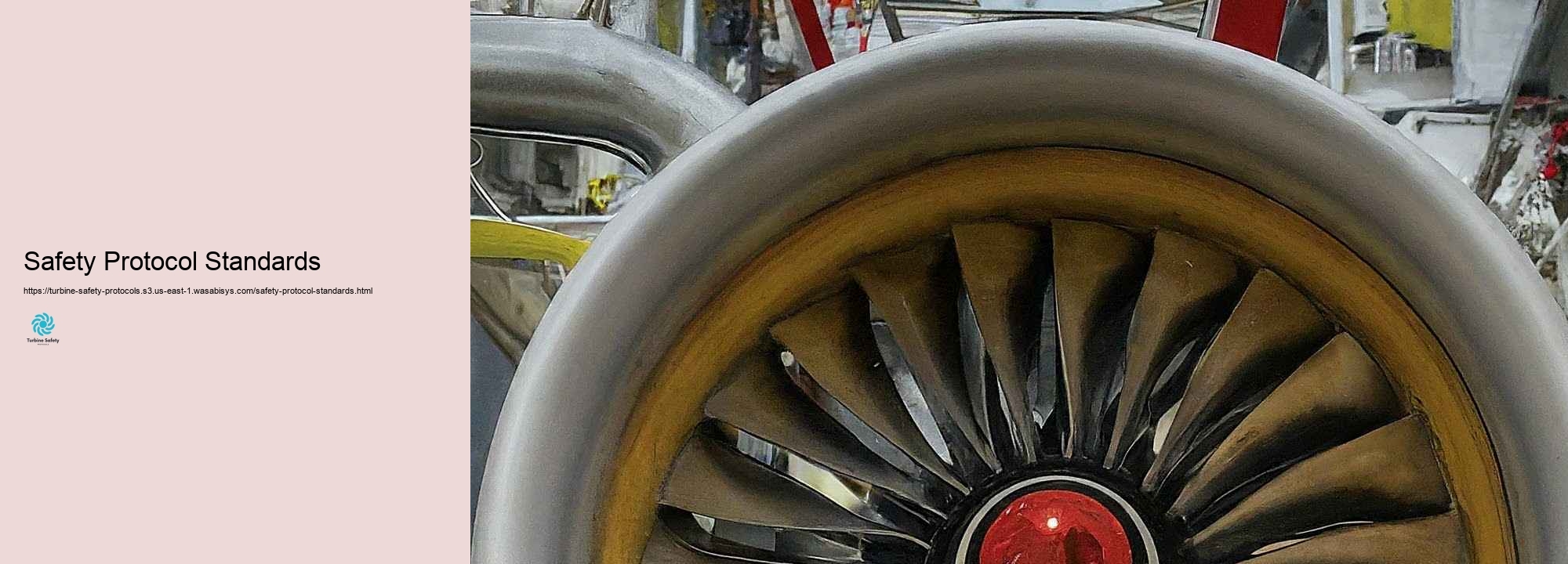
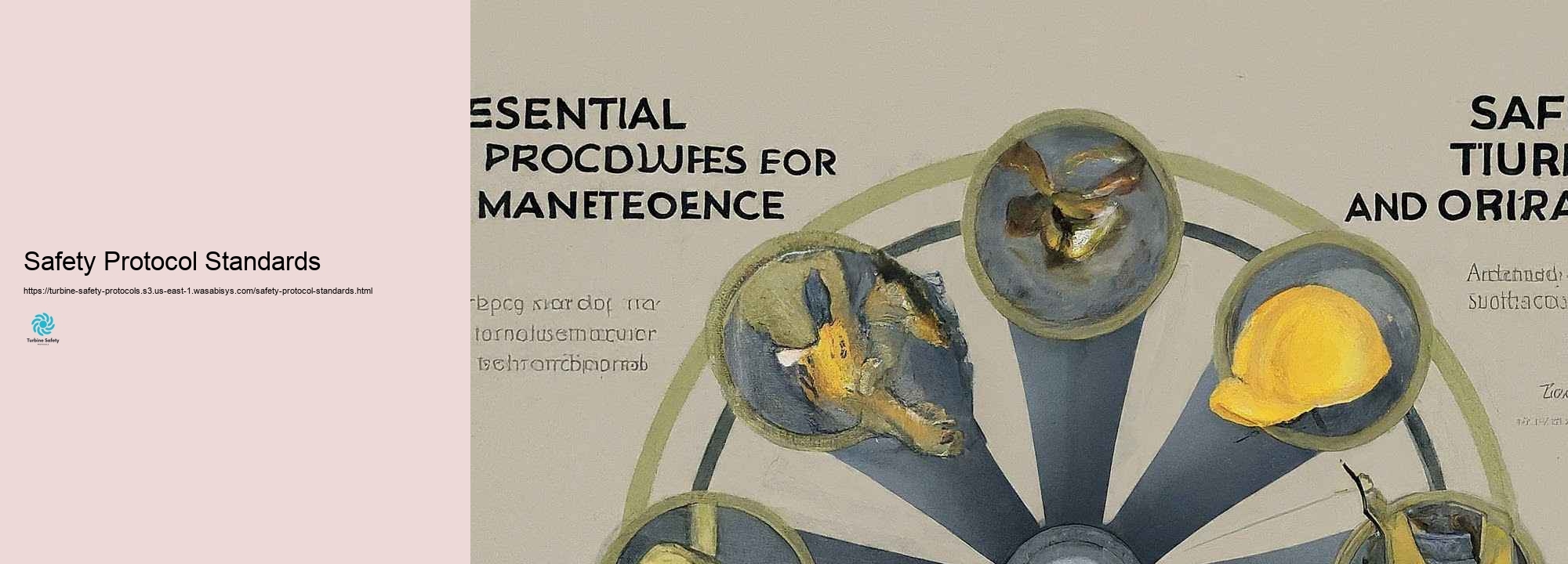
Safety demands and compliance are essential in turbine treatments, whether in wind, hydroelectric, or thermal nuclear power plant. These needs are made to safe staff members, make certain useful honesty, and reduction environmental affects. Staying with these criteria is not just a lawful demand however in addition a crucial aspect of maintaining trustworthy and lasting power producing. Among the essential safety needs in turbine procedures is the Occupational Safety and Health and wellness Management (OSHA) guidelines. These standards cover a variety of safety aspects, including loss protection, electric safety, and threat interaction. For wind generators, OSHA has details demands dealing with the one-of-a-kind problems of running at altitudes and in restricted areas. Consistency with OSHA requirements includes routine safety audits, correct training of personnel, and implementation of safety protocols personalized to the specific threats connected with turbine procedures. The International Electrotechnical Settlement (IEC) offers an extra established of important demands for turbine safety, especially for wind turbines. The IEC 61400 collection of standards covers various facets of wind turbine design, setup, and treatment. These needs address issues such as architectural security, electrical systems, and effectiveness examination. Compliance with IEC demands is commonly a need for certification and is vital for making sure the reliability and safety of wind turbine procedures. For hydroelectric generators, the Federal Power Regulative Payment (FERC) in the USA sets forth extensive safety standards. These standards cover dam safety, emergency situation action methods, and functional treatments. Consistency with FERC standards includes regular exams, upkeep of safety tools, and advancement of resilient emergency situation responses protocols. In the world of thermal power plants, the American Culture of Mechanical Designers (ASME) products important safety requirements for turbine procedures. The ASME Central Heating Boiler and Tension Vessel Code is specifically relevant, addressing the design, manufacture, and evaluation of pressure-containing elements in thermal nuclear power plant. Adherence to these demands is essential for stopping ravaging failings and ensuring the lasting stability of turbine systems. Ecological compliance is another important element of turbine operations. For wind wind turbines, this often requires adherence to wildlife protection requirements, such as those recognized by the united state Fish and Wild Animals Remedy. These criteria goal to decline the effect of wind ranches on bird and bat populations. Compliance might include executing wild animals checking programs, adjusting turbine treatments throughout movement seasons, and utilizing modern-day innovations to prevent wild animals accidents. In hydroelectric procedures, environmental compliance typically concentrates on water high quality and fish defense. Requirements established by ecological companies need operators to maintain minimum water streams, display screen water premium, and accomplish fish flow systems. Conformity with these criteria is essential for maintaining power generation with eco-friendly conservation. For thermal nuclear power plant, air top quality criteria established by epa are a crucial conformity area. This requires sticking to exhaust limitations for toxic substances such as sulfur dioxide, nitrogen oxides, and particulate concern. Consistency usually demands the configuration and upkeep of discharge control modern-day technologies and normal monitoring of exhaust gases. Cybersecurity has come to be a considerably essential component of safety criteria in turbine operations. The North American Electric Dependability Company (NERC) Essential Structure Protection (CIP) standards offer requirements for protecting the functional development systems that control generators and various other power generation tools. Conformity with these needs involves carrying out sturdy cybersecurity actions, carrying out regular susceptability evaluations, and training workers in cybersecurity finest techniques. Safety criteria furthermore reach the maintenance and examination of generators. For wind generators, this includes normal exams of blades, nacelles, and towers. Criteria usually define the consistency and level of these analyses, together with the certifications called for for examination workers. Comparable criteria exist for hydroelectric and thermal generators, with certain emphasis areas such as rotor honesty, bearing problem, and vibration analysis. Emergency situation readiness is an added crucial element of safety requirements in turbine procedures. This includes creating and keeping emergency situation activity strategies that address numerous situations, from gadgets failings to natural catastrophes. Conformity with these requirements generally requires regular drills, sychronisation with area emergency situation options, and continuous upgrading of action protocols based upon lessons discovered and advancing suitable strategies. Personal protective tools (PPE) standards are vital in guaranteeing employee safety throughout turbine procedures and upkeep. These criteria specify the ideal PPE for numerous jobs, from basic construction hats and shatterproof glass to specialized autumn defense tools for wind turbine professionals. Conformity involves not just providing the appropriate PPE however likewise guaranteeing its appropriate usage and maintenance. Training and certification standards play an essential responsibility in maintaining safety in turbine treatments.
Turbine safety is a necessary facet of wind power operations, encompassing a variety of practices and procedures created to protected employees, devices, and the setting. As wind wind turbines remain to grow in dimension and details, applying and sticking to optimal safety techniques comes to be significantly vital. This brief article checks out critical techniques and strategies for decreasing risks and preventing crashes in turbine procedures and upkeep. One of the standard ideas of turbine safety is thorough hazard evaluation. Prior to any type of type of work is executed on or around a turbine, a full evaluation of possible threats needs to be conducted. This includes examining eco-friendly conditions, such as wind rate and weather report, along with the certain risks connected with the task handy. Risk analyses should be lively, often upgraded to show transforming troubles or brand-new information, and linked clearly to all workers associated with the procedure. Individual Safety Devices (PPE) is an important element of turbine safety. Staff members have to be outfitted with ideal safety devices, including construction hats, safety glasses, handwear covers, and steel-toed boots. For operate at altitudes, specialized loss security gadgets is needed. This frequently includes full-body harnesses, lanyards, and support points. Regular examination and upkeep of PPE are important to make certain its performance. Training in the right use and treatment of safety tools is just as essential, as even one of the most reliable gear is simply efficient when used correctly. Running at elevations deals among one of the most substantial threats in turbine procedures. Finest techniques for elevation safety include using loss concern systems, right ladder safety protocols, and the application of rescue plans. Lots of wind cattle ranches are now accepting advanced availability systems, such as service lifts, to decrease the risks related to ladder goes up. Regular training in elevation safety and rescue therapies is essential, including functional exercises and simulations of emergency situation scenarios. Electric safety is another essential location in turbine procedures. Wind generators consist of high-voltage systems, and dealing with or around these systems requires specialized knowledge and safety measures. Lock-out/tag-out therapies are vital when accomplishing maintenance on electrical systems to ensure that devices is successfully de-energized prior to job beginnings. Just certified and certified employees should work with electrical systems, and normal electric safety training need to be offered to all significant team. Weather play a significant duty in turbine safety. High winds, lightning, and serious temperature level degrees can all posture extreme dangers to staff members and devices. Performing clear weather-related work protocols is critical. This might include setting wind rate restrictions for sure activities, developing lightning safety therapies, and supplying criteria for operating in severe warmth or cool. Real-time weather condition checking systems can help drivers make educated selections concerning when it is secure to do specific work. Constricted room access is another area of problem in turbine safety. Various components of a wind turbine, such as the nacelle or facility, can be classified as restricted locations. Access right into these locations demands particular safety therapies, including weather screening, air flow, and making use of a standby individual. Ideal training in restricted area entrance and rescue is vital for any type of type of workers who may demand to run in these locations. Crane and raising procedures are generally necessary for turbine upkeep and component substitute. These procedures lug considerable dangers and call for mindful preparing and implementation. Suitable methods consist of extensive tools examinations, clear interaction protocols, and making use of certified operators. Lots calculations, wind price security, and ideal rigging strategies are all essential components of secure lifting treatments.
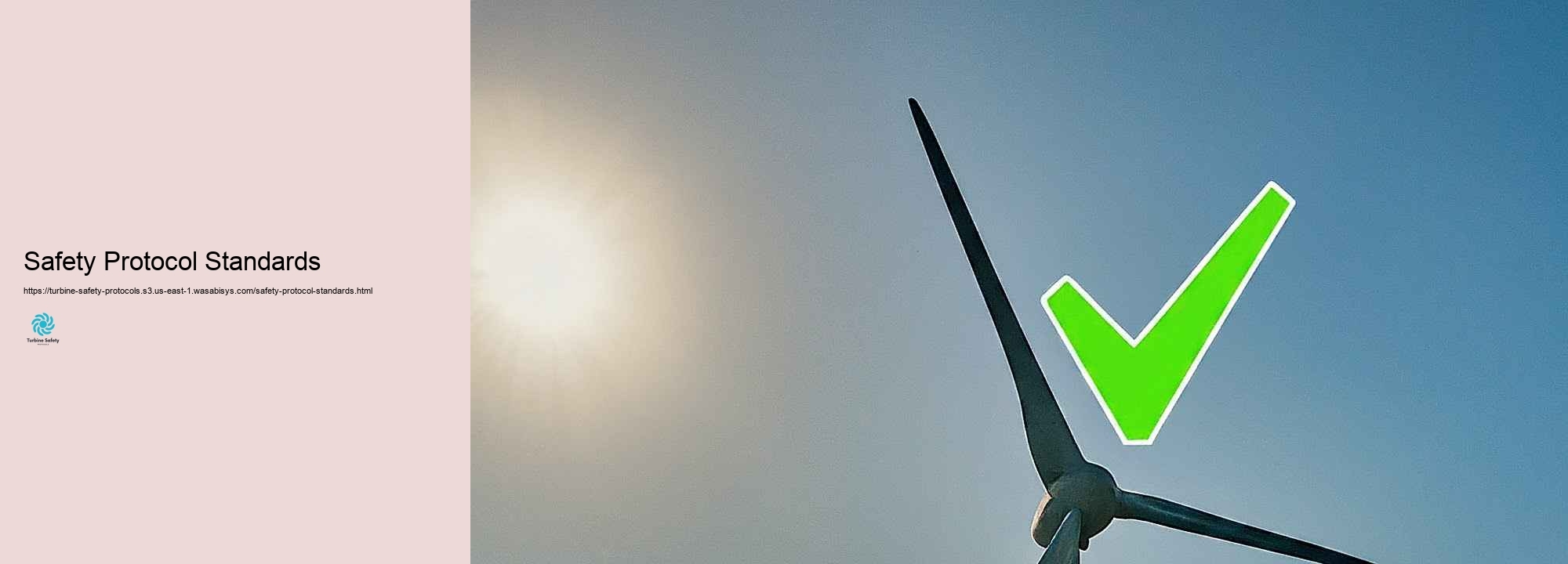

Safety equipment plays a crucial function in turbine procedures, functioning as the first line of defense versus possible risks and making certain the wellness of employees operating in power generation facilities. The different collection of safety gadgets used in turbine procedures programs the intricate and potentially unsafe nature of these setups, where heats, pressurized systems, rotating machinery, and electric risks are widespread. Personal Protective Devices (PPE) forms the foundation of safety devices in turbine procedures. Building hats are essential for securing versus going down items and head effects, especially in locations with above work or in restricted areas within the turbine structure. Shatterproof glass or safety glasses shield the eyes from flying bits, dust, and possible chemical dashes. In places with high sound degrees, such as near running generators or in generator areas, listening to protection in the type of earplugs or earmuffs is important to stop resilient hearing damages. Steel-toed boots are conventional footwear in turbine atmospheres, securing against going down things and providing slip resistance on possibly slick surface areas. In areas where there's a danger of arc flash or fire, flame-resistant garments is required. This customized garments is developed to self-extinguish and deal an obstacle versus thermal energy, decreasing the seriousness of shed injuries in case of an electric arc or flash fire. Loss protection tools is specifically essential in turbine procedures, particularly for wind turbines where operate at height prevails. Full-body harnesses, lanyards, and self-retracting lifelines are essential elements of a loss apprehension system. These systems are created to safely quit a fall and reduction the pressures placed in on the body. Anchor factors, whether long-lasting installments or momentary configurations, deal secure and safe and secure attachment points for these systems. For wind turbine upkeep, specialized climbing and placing gadgets might additionally be used to authorization workers to securely access different parts of the turbine structure. Respiratory safety and security devices is needed in certain turbine procedure circumstances. In scenarios where air-borne pollutants exist, such as during cleansing procedures or when dealing with specific chemicals, respirators or breathing device might be required.
Turbine safety protocols are developed to make certain the risk-free treatment and upkeep of turbines, which are important components in power generation. While safety nets are crucial, having robust emergency reaction and event administration techniques in position is just as important. These strategies aid reduce the result of unanticipated occasions, safe employees, and decline downtime. Efficient emergency circumstance action and situation checking are important for maintaining useful honesty and making certain the health of those associated with turbine procedures. Emergency scenario action preparing consists of developing detailed treatments for responding to possible occurrences. This consists of recognizing possible risks, such as fires, electrical shocks, or mechanical failings, and explaining the activities to be soaked up each scenario. The technique needs to cover prompt actions, communication protocols, emptying treatments, and the functions and duties of all employees involved. Typical updates and evaluations of the emergency situation reaction strategy are vital to assurance it stays essential and effective. Occasion coverage and papers are vital components of emergency feedback and occasion administration. All events, despite specifically how small, need to be extensively tape-recorded. This consists of details of the event, the actions taken, and any type of injuries or damage experienced. Suitable documents assists in accomplishing thorough evaluations, identifying beginning, and applying corrective activities to quit future events. It additionally functions as a beneficial source for training and boosting safety protocols. Training and drills are essential for assuring that all workers are prepared to respond efficiently in emergency situation scenarios. Regular training sessions should cover emergency situation procedures, utilizing safety devices, and communication protocols. Drills and simulations help reinforce this competence and make certain that workers can act without delay and appropriately in real-world situations. Educating ought to be personalized to the particular needs of the turbine procedure and require to include both normal and high-risk situations. Effective interaction is important throughout emergency scenario actions. Clear communication protocols ought to be established to make sure that all relevant celebrations are alerted without delay and appropriately. This includes indoor communication amongst staff member, in addition to outside interaction with emergency circumstance options and regulative bodies. Communication protocols ought to specify that should be contacted, specifically just how details should be connected, and what details requirements to be provided. Occurrence examination is an essential step in the event administration process. It requires a detailed analysis of the event to determine its root cause and including facets. The examination ought to be executed by a group with varied experience, consisting of safety specialists, engineers, and useful workers. The findings of the examination ought to be documented and taken advantage of to perform restorative tasks, upgrade safety protocols, and offer training to avoid similar incidents in the future. Rehabilitative actions and preventive measures are crucial for making certain that incidents do not reoccur. Based on the findings of occurrence evaluations, rehabilitative activities require to be needed to address any kind of type of deficiencies or weak points recognized. This could entail fixing or replacing devices, upgrading safety therapies, or offering additional training to staff members. Safeguard should likewise be performed to lessen prospective hazards before they cause occasions. This consists of typical upkeep, analyses, and continual monitoring of turbine procedures. Regular renovation is an essential principle in emergency activity and situation monitoring. Safety protocols should be regularly taken a look at and updated to program brand-new info, modern technologies, and finest practices. Responses from workers, event examinations, and sector criteria should certainly be utilized to recognize places for improvement and apply modifications. Continuous improvement help preserve a culture of safety within the organization and sees to it that emergency action and event monitoring techniques continue to be reliable and important. Governing consistency is another vital element of emergency situation comments and event management. Organizations has to follow regional, nationwide, and worldwide policies attached to turbine safety. This consists of reporting instances to governing bodies, maintaining called for records, and making certain that all safety protocols satisfy or surpass regulative criteria. Safety Protocol Standards Conformity not only helps prevent legal penalties yet likewise makes certain that safety requirements are constantly high. An emergency situation reaction group (ERT) is a specialized group educated to take care of emergency circumstances. The ERT should certainly include staff members with different capabilities and effectiveness essential to turbine procedures. They should be learnt emergency treatment, firefighting, electrical safety, and various other critical places. The ERT should perform routine drills and training exercises to keep their readiness and guarantee they can respond successfully in emergency scenarios. Public safety variables to consider are similarly important when establishing emergency comments and occasion monitoring techniques. Turbine treatments can influence close by locations, especially in the event of an incident. Consequently, approaches should consist of treatments to protected the public, such as emptying treatments, public notifies, and control with regional emergency situation services. Ensuring public safety aids preserve depend on and partnership in between the company and the community. Emergency situation action and case checking are important components of turbine safety protocols. By developing extensive emergency situation response techniques, doing regular training and drills, making sure dependable interaction protocols, checking out occasions entirely, carrying out rehabilitative actions, keeping consistent improvement, sticking to regulative conformity, establishing an emergency activity team, and thinking of public safety, firms can dramatically boost their capability to react to emergencies and care for situations effectively. These activities not just secure workers and equipment however likewise contribute to the total reliability and effectiveness of turbine procedures.
